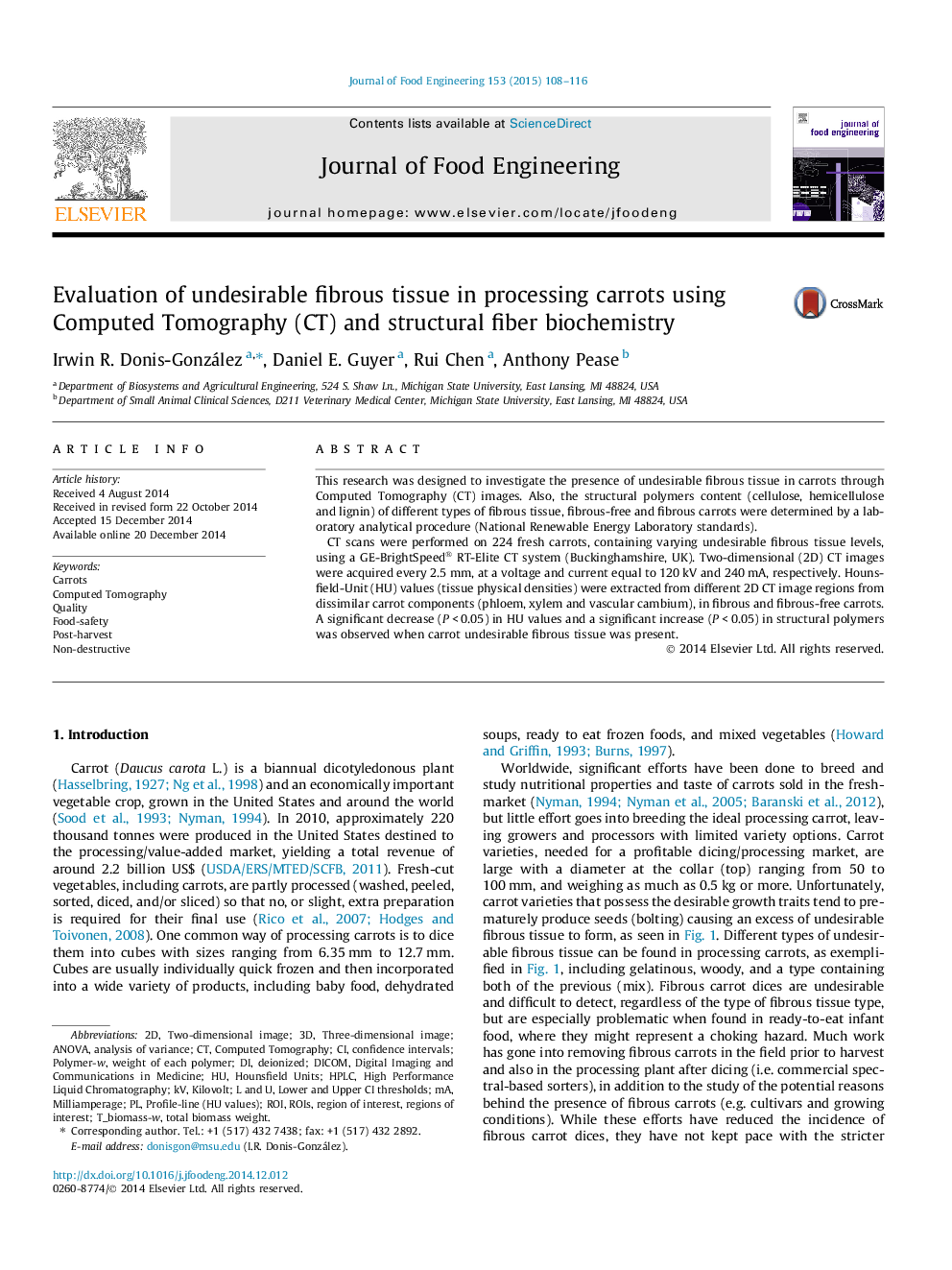| Article ID | Journal | Published Year | Pages | File Type |
|---|---|---|---|---|
| 222890 | Journal of Food Engineering | 2015 | 9 Pages |
•Computed Tomography (CT) was examined as an in vivo tool to study fresh carrots.•CT image Hounsfield-Unit values are used to infer fibrous tissue content in carrots.•Information to develop sorting algorithms based on carrot internal quality is offered.•Structural polymers increase in carrots containing undesirable fibrous tissue.
This research was designed to investigate the presence of undesirable fibrous tissue in carrots through Computed Tomography (CT) images. Also, the structural polymers content (cellulose, hemicellulose and lignin) of different types of fibrous tissue, fibrous-free and fibrous carrots were determined by a laboratory analytical procedure (National Renewable Energy Laboratory standards).CT scans were performed on 224 fresh carrots, containing varying undesirable fibrous tissue levels, using a GE-BrightSpeed® RT-Elite CT system (Buckinghamshire, UK). Two-dimensional (2D) CT images were acquired every 2.5 mm, at a voltage and current equal to 120 kV and 240 mA, respectively. Hounsfield-Unit (HU) values (tissue physical densities) were extracted from different 2D CT image regions from dissimilar carrot components (phloem, xylem and vascular cambium), in fibrous and fibrous-free carrots. A significant decrease (P < 0.05) in HU values and a significant increase (P < 0.05) in structural polymers was observed when carrot undesirable fibrous tissue was present.
